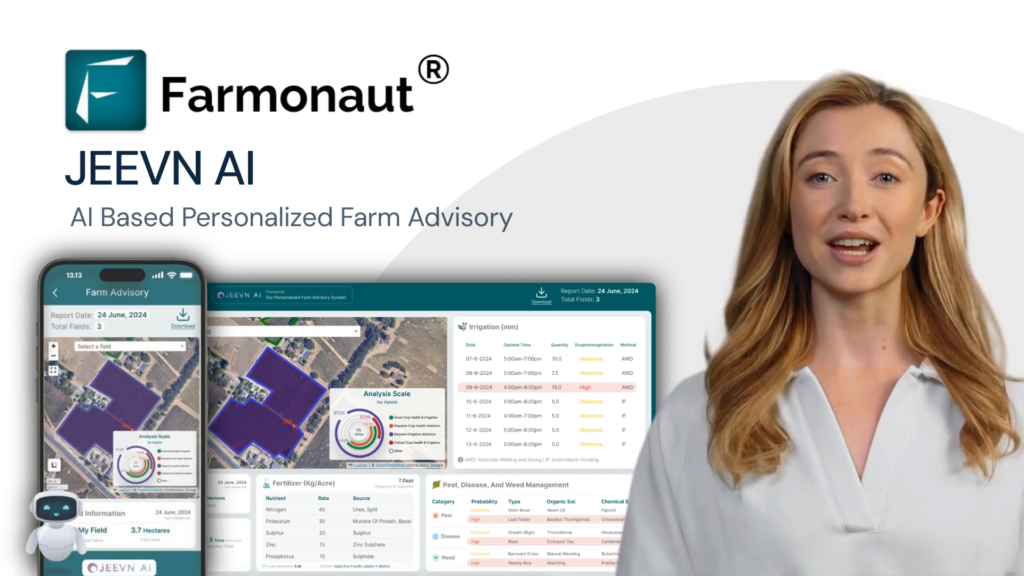How to Start an Almond Farm: Make Millions in California!
Introduction: Why Almond Farming in California?
Are you considering almond farming in California? With its rich soil, optimal climate, advanced irrigation systems, and an established global market, California’s Central Valley is undeniably the world’s top region for almond production. The investment required may be significant, but the potential rewards are remarkable, particularly when sustainable and efficient practices are employed.
Our comprehensive guide details everything needed for successful almond orchard establishment—from soil preparation and tree selection to financial planning, marketing strategies, and risk management. Let’s explore how to build a profitable and sustainable almond farm that could help you make millions in this vibrant industry.
1. Site Selection & Land Acquisition for Almond Farm Investment
The first and arguably most critical step in almond orchard establishment is selecting the right location. Your choice of land will directly impact your yield, input costs, and long-term profitability. When planning your almond farm investment, focus on the below factors to maximize success:
Climate Considerations
- Mediterranean Climate: Almond trees thrive where hot, dry summers meet mild, wet winters. The Central Valley of California perfectly embodies these conditions.
- Chilling Hours: Almond trees need between 250-500 chilling hours under 7°C during winter to break dormancy and induce flowering. Verify local climate data before land acquisition.
Soil Quality and Suitability
- Best Soil for Almond Trees: Well-drained sandy loam soils are ideal. Conduct soil tests to identify pH (target 6.0–7.5), nutrient levels, and possible deficiencies before buying land.
- Soil Health and Sustainability: Using platforms to track soil carbon and nutrient profiles ensures health and long-term orchard productivity. See how Farmonaut’s carbon footprinting helps sustainable almond farms.
Water Availability and Irrigation
- Reliable Water Source: Almond cultivation is water-intensive. Identify secure water rights, on-farm storage capacity, and nearby access for efficient irrigation systems.
- Drip Irrigation: Drip irrigation systems increase water-use efficiency, reduce evaporation, and minimize waste—an environmental and financial advantage.
Accessibility and Infrastructure
- Proximity to Market: Choose land near processing facilities and transportation networks for streamlined logistics and lower costs.
- Local Regulations: Verify agricultural compliance (zoning, water rights, and environmental laws) at federal, state, and local levels.
In summary, site selection, land acquisition, and thorough assessment of soil, water, and climate requirements are foundational to a high-yielding, sustainable almond farming operation.
2. Almond Orchard Establishment: Preparation & Planting
Land Preparation
- Debris Clearing: Remove old roots, rocks, and plant material to avoid disease carryover and ensure soil quality.
- Deep Tilling: Loosen subsoil for robust root development and enhanced water infiltration.
- Soil Amendments: Incorporate organic matter and adjust pH using lime or sulfur. Using precise soil tests helps identify nutrient deficiencies and customize amendments accordingly.
Almond Variety Selection and Planting
- Climate-Adapted Varieties: Choose almond varieties with proven performance in your location, focusing on disease resistance, chilling requirement, and market demand (e.g., Nonpareil, Carmel, Sonora).
- Pollinator Selection: Almond trees require cross-pollination. At least two compatible varieties should be interplanted in the orchard for optimal pollination and yield.
- Tree Spacing: Standard spacing in California is 18–22 feet between trees and 20–24 feet between rows. Higher-density systems are possible but may impact long-term vigor.
- Dormant Season Planting: Plant bare-root or container-grown trees during winter dormancy for better root development and establishment.
Almond Irrigation System Installation
- Drip Irrigation: Install drip irrigation lines to deliver water directly to the root zone, minimizing loss from evaporation and runoff.
- System Automation: Modern systems offer moisture sensors, pressure regulation, and automation for maximum efficiency and water conservation.
For real-time water management and system optimization, API-based crop monitoring platforms can monitor soil moisture and irrigation needs throughout the growing season.
Advanced field mapping and farm management tools:
Discover large scale farm management with Farmonaut’s web and app solution—ideal for coordinated orchard establishment and operations across vast acreage.
Pollination Planning for Almond Production
- Bee Hive Placement: Contract with local beekeepers to place hives in the orchard during bloom. Standard recommendation: 2–2.5 hives per acre.
- Pollinator Support: Plant pollinator-friendly cover crops (e.g., clover, vetch) to provide diverse forage for bees and other beneficial insects, enhancing fruit set and yield.
3. Sustainable Almond Farming Practices
Committing to sustainable almond farming practices not only preserves natural resources but also meets rising consumer and regulatory demand for eco-friendly farm management. Here’s how we recommend implementing these principles throughout your operation:
Soil & Nutrient Management
- Organic Fertilizers: Transition to organic almond farming by using compost, manure, or plant-based amendments, reducing chemical inputs and improving soil structure.
- Cover Crops: Sow cover crops (mustard, clover, rye) in alleyways to control erosion, improve organic matter, suppress weeds, and provide habitat for beneficial insects.
- Soil Testing & Amendments: Regularly assess soil nutrient levels and pH, monitoring deficiencies and adjusting with targeted applications.
To take nutrient management to the next level, use Farmonaut’s Jeevn AI-based advisory system for real-time recommendations on fertilizer application, irrigation scheduling, and crop health analysis.
Efficient Water Management
- Conservation Techniques: Besides drip irrigation, implement mulching and regular maintenance to prevent leaks and further reduce evaporation.
- Smart Scheduling: Schedule watering during cooler parts of the day (night or early morning) to reduce water loss and stress on trees.
- Remote Monitoring: Satellite-based platforms can monitor soil moisture and irrigation system performance, aiding in resource-saving decision-making.
For more on integrating technology with water management, refer to the Farmonaut API for seamless integration of satellite and weather data into your farm operations.
Integrated Pest Management (IPM)
- Biological Controls: Encourage beneficial predators (ladybugs, lacewings) and install birdhouses to naturally control pest populations.
- Cultural Practices: Rotate cover crops, prune diseased wood, and maintain orchard hygiene to reduce pest and disease pressure.
- Chemical Use: Apply chemical pesticides only as a last resort and in accordance with integrated pest management strategies to ensure sustainability and pollinator safety.
Pollinator Health and Support
- Habitat Creation: Install hedgerows, maintain un-mowed field margins, and limit pesticide use during bloom to protect vital pollinators.
- Bee Watering Stations: In dry climates, provide clean water sources for pollinators throughout the orchard.
Traceability & Transparency in Supply Chain
Build trust with buyers and strengthen your brand by integrating blockchain-based traceability solutions. This ensures transparency in your products’ journey, enhances accountability, and appeals to high-value markets.
4. Almond Farm Financial Planning & Investment
Launching a profitable almond farm demands thorough financial planning, from start-up to full-scale production. Below, we outline the main investment areas and financial considerations for aspiring Californian almond farmers:
Start-up and Operating Costs
- Land Acquisition: The most significant up-front cost, highly variable by size, location, and water access—ranges from $10,000–$40,000/acre in the Central Valley.
- Orchard Establishment: Includes land clearing, soil preparation, planting, irrigation installation, and tree stock. Typical cost: $7,000–$12,000/acre.
- Equipment: Tractors, sprayers, pruning tools, harvesters, and bins.
- Sustainable Farm Upgrades: Additional outlays may be necessary if organic certification or advanced conservation practices are targeted.
Annual Operating Costs: Labor, fertilizers (organic or synthetic), pests and disease controls, irrigation maintenance, and insurance average $2,000–$3,000/acre/year.
Revenue Projections and Profitability
- Year 1–3: Non-productive phase (focus on growing orchard and root systems; minimal yield and revenue).
- Year 4–5: Begin commercial harvest (500–1,500 lbs/acre). Revenue starts covering operating expenses.
- Year 6–7 and beyond: Peak production (up to 2,500+ lbs/acre), with established trees and mature market access.
Flexible Financing and Insurance
- Crop Loan and Insurance: Satellite-based monitoring streamlines insurance verification and loan approvals. Learn more about Farmonaut’s crop loan and insurance verification tools for risk reduction and easier access to capital.
5. Almond Marketing, Sales & Market Trends
Once your farm is producing, marketing and sales strategy become the key drivers of net profit and industry positioning. California’s almonds are in high global demand, but high prices attract international competitors—so standing out is vital!
Branding and Niche Market Development
- Brand Identity: Promote the local origin, sustainability, and traceability of your almonds. Organic certification further boosts buyer interest and prices.
- Direct-to-Consumer: Farmers’ markets, CSA boxes, and online platforms open new sales channels with higher margins than bulk processors.
- Export Readiness: Comply with international standards and certifications for global shipments.
Understanding Almond Market Trends
- Market Research: Stay updated on almond market trends, demand shifts (e.g., plant-based products), and pricing cycles to forecast sales and production scale.
- Sustainability Premium: Adopt and highlight sustainable practices that appeal to premium markets under sustainability or organic labels.
Distribution Channels and Networking
- Build Relationships: Partner with local processors, co-ops, restaurants, and specialty food retailers.
- Supply Chain Transparency: Use traceability tools to provide batch-level data, giving buyers confidence in sourcing and attracting contracts.
6. Regulatory Compliance & Certifications
Operating a California almond farm means meeting a variety of compliance requirements:
- Water Rights & Usage: Understand and comply with state and local water regulations, especially under drought or environmental mandates.
- Food Safety: Implement measures to comply with FSMA (Food Safety Modernization Act) and other food traceability requirements.
- Sustainable Certification: Certifications such as USDA Organic, Sustainably Grown, or local sustainability initiatives can expand your market access and boost your selling price.
Certification and data-backed supply chain transparency can be achieved with seamless record-keeping, supported by Farmonaut’s traceability solutions.
7. Risk Management in Almond Production
Every almond farm faces risk—weather, market volatility, pests, and regulatory changes. Here’s how to build resilience:
- Crop Insurance: Protects your business from weather extremes, pest damage, and yield loss. Easier to acquire with satellite-based farm verification.
- Crop Diversification: Consider intercropping with compatible crops during orchard maturation or integrating livestock for soil improvement and income diversification.
- Market Monitoring: Use real-time market data and consumer trend tracking for more agile pricing and logistics decisions.
- Continuous Learning: Stay up-to-date on technological advances and industry developments.
Leveraging Advanced Farm Management Technologies
Digital, satellite, and AI-powered platforms are transforming almond farming. Here are some ways modern solutions improve outcomes:
- Satellite-Based Crop Health Monitoring: Use NDVI and other spectral indices via Farmonaut to detect soil and crop issues, guide fertilizer application, and mitigate pest outbreaks early.
- AI-Based Advisory Systems: Farmonaut’s Jeevn AI offers personalized recommendations for irrigation, nutrition, and optimal scheduling based on weather and field-specific data.
- Resource & Fleet Management: Streamline machinery use and logistics for large-scale orchards with fleet management solutions—reducing operating costs and maximizing uptime.
- Blockchain Product Traceability: Meet premium buyer requirements for traceability by tracking almond batches from field to packaging.
- Carbon Footprint Tracking: Demonstrate sustainability by monitoring and optimizing emissions over time.
Our all-in-one platform is available on Android, iOS, web browser, and via API integration. Whether you’re running a family farm or managing thousands of acres in Central Valley, these tools increase sustainability and profitability.
Farmonaut Subscription Packages: Monitor and Optimize Your Almond Farm
Cost-Benefit & Revenue Projection Table for Almond Orchard Investment
| Year | Est. Initial Investment (USD) (Cumulative) |
Annual Operating Costs (USD/acre) | Est. Yield (kg/acre) | Est. Price per kg (USD) | Total Revenue (USD/acre) | Projected Net Profit (USD/acre) |
|---|---|---|---|---|---|---|
| 1 (Planting) | $15,000 | $2,500 | 0 | — | 0 | -$17,500 |
| 2 | $15,000 | $2,500 | 0 | — | 0 | -$2,500 |
| 3 | $15,000 | $2,500 | 200 | $4.50 | $900 | -$1,600 |
| 4 | $15,000 | $2,500 | 850 | $5.00 | $4,250 | $1,750 |
| 5 | $15,000 | $2,500 | 1,750 | $5.00 | $8,750 | $6,250 |
| 6 | $15,000 | $2,500 | 2,500 | $5.00 | $12,500 | $10,000 |
| 7 | $15,000 | $2,500 | 2,500 | $5.00 | $12,500 | $10,000 |
Note: Table based on averages for California and for guidance purpose only; local land, input prices, and yields will differ.
Frequently Asked Questions (FAQ)
Q1: What is the best soil for almond trees?
Almond trees perform best in sandy loam soils with excellent drainage, moderate fertility, and a pH of 6.0–7.5. Always conduct a soil test and amend as needed before planting.
Q2: How much capital is needed for an almond farm investment?
In California’s Central Valley, initial investment—including land, orchard establishment, irrigation, and equipment—ranges from $15,000–$25,000 per acre. Ongoing operating costs average $2,500 per acre annually.
Q3: How long does it take for almonds to reach full production?
Almond trees typically begin producing commercially in year 4, with full (peak) production reached by year 7.
Q4: Which irrigation system is most efficient for almond farming?
Drip irrigation is the most water-efficient for almonds, delivering moisture directly to root zones, minimizing evaporation and reducing runoff.
Q5: What certifications help with almond marketing?
USDA Organic, Non-GMO, and sustainability certifications help reach premium markets in the US, EU, and Asia. Traceability tools assist in achieving and verifying these credentials.
Q6: How can digital tools help in almond crop management?
Satellite imagery and AI-powered advisory systems support precise irrigation, disease detection, fertilizer scheduling, and yield forecasting—improving profitability and sustainability.
Q7: Are there risks related to climate change?
Yes. Droughts, unseasonal rains, and increased pest/disease risks are growing concerns. Adopting risk management strategies and leveraging technology for early warning and mitigation is critical.
Conclusion
Starting an almond farm in California is a strategic investment with substantial potential when backed by careful planning, science-driven soil preparation, smart irrigation, sustainable farming practices, and robust financial management. Success hinges on selecting the best location, nurturing the right varieties, using efficient irrigation systems, and adapting to almond market trends for maximum returns. Innovative farm management tools like those provided by Farmonaut can help optimize every stage—from crop monitoring to traceability and sustainability reporting—ensuring your almond business is ready to thrive in the world’s most dynamic agricultural region.
Ready to transform Californian soil into profit and sustainability? Start your journey with digital farm solutions today!


















